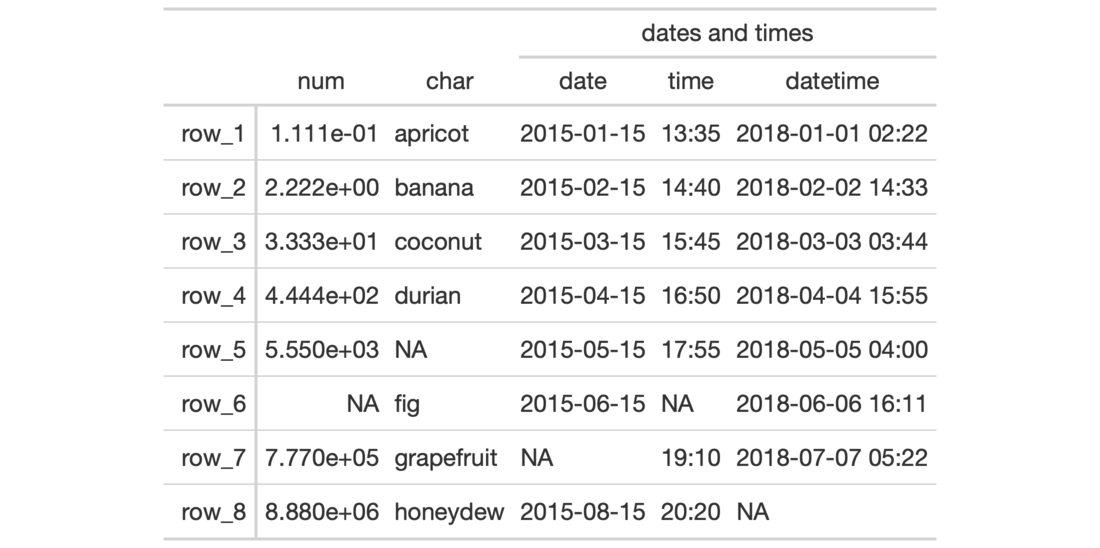The cells_column_spanners() function is used to target the cells that
contain the table column spanners. This is useful when applying a footnote
with tab_footnote() or adding custom style with tab_style(). The function
is expressly used in each of those functions' locations argument.
cells_column_spanners(spanners)
Arguments
| spanners | The names of the spanners that are to be targeted. |
|---|
Value
A list object with the classes cells_column_spanners and
location_cells.
Details
When using any of the location helper functions with an appropriate function
that has a locations argument, multiple locations can be targeted by
enclosing several cells_*() helper functions in a list(). The following
helper functions can be used to target cells (roughly in order from the top
to the bottom of a table):
cells_title(): targets the table title or the table subtitle depending on the value given to thegroupsargument ("title"or"subtitle").cells_stubhead(): targets the stubhead location, a cell of which is only available when there is a stub; a label in that location can be created by using thetab_stubhead()function.cells_column_spanners(): targets the spanner column labels, which appear above the column labels.cells_column_labels(): targets the column labels.cells_row_groups(): targets the row group labels in any available row groups using thegroupsargument.cells_stub(): targets row labels in the table stub using therowsargument.cells_body(): targets data cells in the table body using intersections ofcolumnsandrows.cells_summary(): targets summary cells in the table body using thegroupsargument and intersections ofcolumnsandrows.cells_grand_summary(): targets cells of the table's grand summary using intersections ofcolumnsandrows
Figures

Function ID
7-7
See also
Other Helper Functions:
adjust_luminance(),
cell_borders(),
cell_fill(),
cell_text(),
cells_body(),
cells_column_labels(),
cells_grand_summary(),
cells_row_groups(),
cells_stubhead(),
cells_stub(),
cells_summary(),
cells_title(),
currency(),
escape_latex(),
gt_latex_dependencies(),
html(),
md(),
pct(),
px(),
random_id()
Examples
# Use `exibble` to create a gt table; add a # spanner column label over three column # labels and then use `tab_style()` to make # the spanner label text bold tab_1 <- exibble %>% dplyr::select(-fctr, -currency, -group) %>% gt(rowname_col = "row") %>% tab_spanner( label = "dates and times", columns = vars(date, time, datetime) ) %>% tab_style( style = cell_text(weight = "bold"), locations = cells_column_spanners(spanners = "dates and times") )